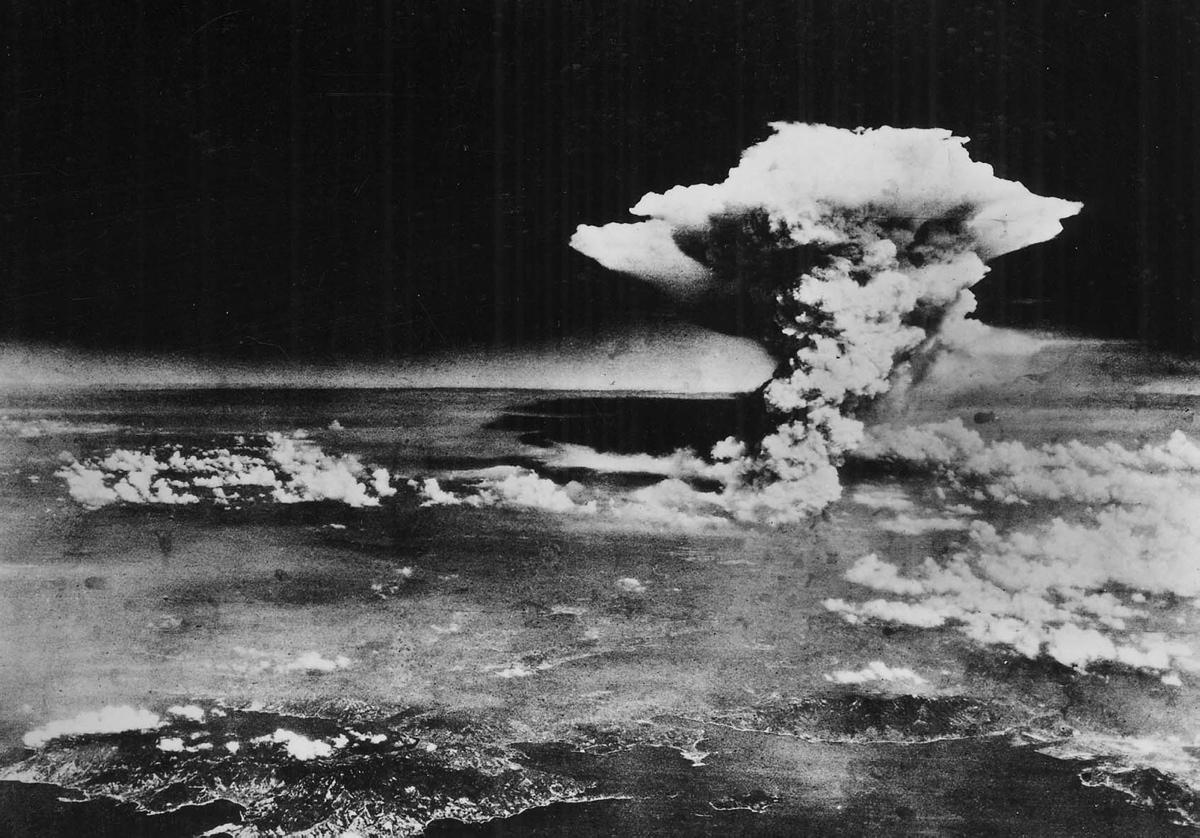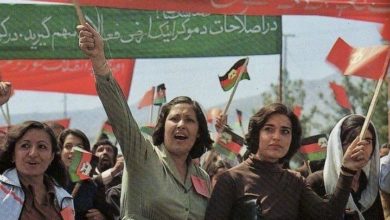The Bush administration, the corporate media and others in the U.S. ruling circles would like people to believe the lie that Afghanistan is incapable of achieving independence and democracy without the “aid” of the U.S. military. Nothing could be further from the truth.
Afghanistan has a long history of independence and anti-colonial struggle that continues to this day.
In the 19th and early 20th centuries the British and Russian empires sought to dominate Afghanistan. The people of Afghanistan fought three wars against the British, defeating them in 1838 and again in 1919. After two years of war from 1878 to 1880, Afghanistan came under British control for 40 years.
In 1917, the Russian revolutionary government renounced all claims that the czarist Russian empire had on Afghanistan. Two years later, Emir Amanollah, a progressive Afghan leader, signed a friendship treaty with the Soviet Union and launched a successful war of independence against the British. Afghans celebrate 1919 as the year of independence.
Despite independence, feudal-like conditions dominated Afghan society. Afghanistan remained one of the poorest and least-developed countries in the world.
At the time of the 1978 revolution, half of all land was owned by 5 percent of the population. The illiteracy rate was 90 percent. Agricultural production made up 80 percent of Afghanistan’s economy. Droughts like the one that lasted from 1970 to 1972 and killed over 80,000 people caused extreme hardship. Poverty was widespread.
Women were sold off to be married and oppressed in all sectors of society. The illiteracy rate for women was 96 percent.
From independence until 1973, Afghanistan was ruled by a monarchy under the family of King Zahir Khan. In 1973, Mohammed Daoud—a member of the royal family—took power, declared himself president and established a republic. Although the monarchy was formally abolished, his reign was increasingly repressive against both Islamic militants and the small but growing communist movement.
Internationally, Afghanistan had been a non-aligned country that had ties with the Soviet Union and the United States. In April 1978, the Daoud regime moved closer to breaking ties with the Soviet Union and sought to liquidate the country’s main communist party, known as the Peoples Democratic Party of Afghanistan. His goal was to improve ties with Washington and U.S. imperialism.
Throughout the 1970s, Afghanistan was important to U.S. imperialism for geopolitical reasons, primarily its border with the Soviet Union. Goal number one of U.S. imperialism at the time was to defeat the Soviet Union, China and other socialist countries and to thwart at every opportunity the massive worldwide anti-colonial struggle.
The April Revolution
Mounting economic hardships, combined with Daoud’s repression and his moves toward the camp of U.S. imperialism, proved to be his undoing.
 PDPA demonstration in Kabul, April 1979. |
On April 17, 1978, Daoud’s government murdered Mir Akbar Khyber, a prominent leader of the PDPA. Mass demonstrations erupted. Daoud then arrested the entire PDPA leadership, including future leaders of the revolutionary government, Noor Mahammed Taraki, Hafizullah Amin, and Babrak Karmal.
On April 27, 1978, the PDPA and progressive members of the Afghan military overthrew the regime of Mohammed Daoud in a military coup. In a radio broadcast to the entire country, the new revolutionary government proclaimed, “For the first time, power has come to the people. The last remnants of the imperialist tyranny, despotism and the royal dynasty have been ended.”
On April 29, hundreds of thousands of Afghanis took to the streets in celebration. Many waved the red flags of the PDPA.
The PDPA had been founded in 1965. It had close to 50,000 members and enjoyed popular support in the cities. But it had never been a united party. In 1967, the PDPA split into two parties: Khalq (“The people”) and Parcham (“The banner,” the name of the party’s weekly magazine in the late 1960s). With the Daoud regime’s political shift to the right, the two parties had reunited in 1977.
Upon seizing power, the PDPA announced a democratic program that included land reform, growth in public services, price controls, separation of church and state, full equality for women, legalization of trade unions and a sweeping literacy campaign.
The revolution canceled the enormous debts of peasants and started training teachers and building schools and hospitals all over the country. Women could no longer be sold into marriage or executed for so-called “infidelities.” Literacy campaigns were undertaken in the many different languages of the country.
Despite violent resistance from rich land owners, 200,000 peasants in a country of 20 million people received land from the PDPA government.
30 years of U.S. aggression against Afghanistan
 Photo: Keith Pavlik |
From the very beginning of the April Revolution, Washington viciously opposed it. For years before the revolution, the CIA and the U.S. government had been trying every means available to disrupt the good relations between the Soviet Union and Afghanistan. Washington had prepared to act if the PDPA came to power in Afghanistan.
Immediately following the revolutionary overthrow of the Daoud regime, the CIA helped organize counterrevolutionary forces. With Democrat Jimmy Carter as president in 1978, Washington formed a counterrevolutionary army of wealthy feudal landowners and reactionary mercenaries. This army called itself the Mujahedeen. The Carter and later the Reagan administrations called them “freedom fighters.” By early 1979, CIA operatives were assisting Mujahedeen artillery strikes on Kabul, the capital of Afghanistan.
It was in this effort to destroy secular socialism and working-class rule in Afghanistan that the CIA organized and financed right-wing anti-communist forces, including Osama Bin Laden, in what was the largest CIA covert operation up until that time. The Republican and Democrats alike were rapturous in their praise of this anti-communist army. It was an army, after all, that was “Made in the U.S.A.”
Internal crisis and Soviet aid
Before the revolutionary government had time to consolidate its power, with very limited resources at its disposal, it had to struggle against the forces of the insurgent landlords, armed and organized by the CIA. This put the revolutionary leadership in a state of crisis, under which factionalism within the PDPA eventually led to the assassination of Taraki, the head of the revolutionary government on Sept. 8, 1979.
The short-lived leadership of Amin, who took power after Taraki, represented a shift to the right in Afghan politics. Amin, himself one of the key leaders of the Afghan revolution, saw the only chance of the survival of the revolution in seeking an agreement with Pakistan and the United States to stop the arming of the counterrevolutionary forces.
In December 1979, Babrak Karmal took over the leadership and immediately requested military assistance from the Soviet Union to help it survive against the U.S.-backed Mujahedeen.
The Soviet army came to the aid of Afghanistan, a friendly country with which it shared a border, to fight against an empire that was bent on destroying the independence of both countries. Together, the Afghan and Soviet armies fought the CIA-backed force for 10 years.
There is every sign that U.S. imperialism saw the Soviet intervention in Afghanistan as an opportunity to weaken the Soviet Union economically and politically. Over 14 years, Washington sent $6 billion in military aid to the counterrevolutionary forces in Afghanistan. The Mujahedeen carried out a terror campaign in the mountains and countryside, torturing and murdering teachers, doctors and women.
By the mid-1980s, the combined pressure of the military campaign in Afghanistan and the intensified arms race with U.S. imperialism was being felt within Soviet political circles. In 1985, Mikhail Gorbachev was elected general secretary of the Communist Party of the Soviet Union. Gorbachev’s leadership grouping aimed for accommodation with imperialism on the world scale and an increased reliance on capitalist economic principles domestically. These “reforms” ultimately led to the collapse of the socialist states in Eastern Europe—and, in 1991, the destruction of the Soviet Union itself.
In the end, the combined pressure of U.S. intervention and the loss of the Afghan revolution’s Soviet allies led to the 1992 defeat of the April Revolution. A civil war between rival factions of the counterrevolutionary army followed, which lasted until 1996.
From 1996 to 2001, the government was led by the Taliban, one of the factions that Washington had armed and trained as part of the Mujahedeen. After a brief period in which the United States backed the Taliban in power, Washington abandoned its old allies when they began pursuing a course too independent of U.S. imperialism.
Using the attacks of September 11, 2001, as a pretext, the U.S. government attacked Afghanistan, overthrowing the government and installing Hamid Karzai, a former CIA asset and Coca-Cola executive, as its puppet. The United States now has three air bases and 16,000 occupation troops in Afghanistan.
A $3 billion regional gas pipeline is under construction in Afghanistan. Unocal, a major U.S. energy corporation, is the major investor.
Like the British empire before it, the U.S. empire is trying to dominate Afghanistan. Afghanistan is located on major trade routes between Russia, China, India and Iran. Central Asia, the Middle East, Iran and the Caucus Region are all areas near Afghanistan with huge oil and gas reserves.
Washington would like to reduce the whole region to colonial, semi-colonial or dependent relations. In the eyes of Wall Street and the Pentagon, independence in Iraq, Afghanistan, Iran, Syria, Palestine and other countries in the greater region cannot be tolerated.
At a U.S. air base in Afghanistan in April 2005, U.S. secretary of defense Donald Rumsfeld spoke plainly about the importance of Afghanistan for the United States. “Afghanistan is a country I think with a wonderful opportunity,” he said. “It does not have the oil wealth, for example, that Iraq does. It has not had the water wealth that Iraq has had. It’s been historically somewhat of a poor country. But it’s a country that’s located in an important area, historically a crossroads.”
Today, Afghanistan is still one of the poorest countries in the world. Over half the people live below the poverty line. Seven hundred children below the age of five die every day, and the average life span is 44 years. Women die in childbirth at a rate 60 times higher than in the United States. Thousands of people have died as a result of the U.S. war and occupation.
In February 2005, the Associated Press reported that Senator John McCain, speaking at a joint press conference with Hamid Karzai in Kabul, Afghanistan said, “The United States needs permanent military bases in Afghanistan to protect its ‘vital national security interests.’”
This is the type of military occupation and neo-colonial bondage that the Afghan people have been fighting against for over a century. It is what the April 1978 revolution was meant to abolish once and for all.





